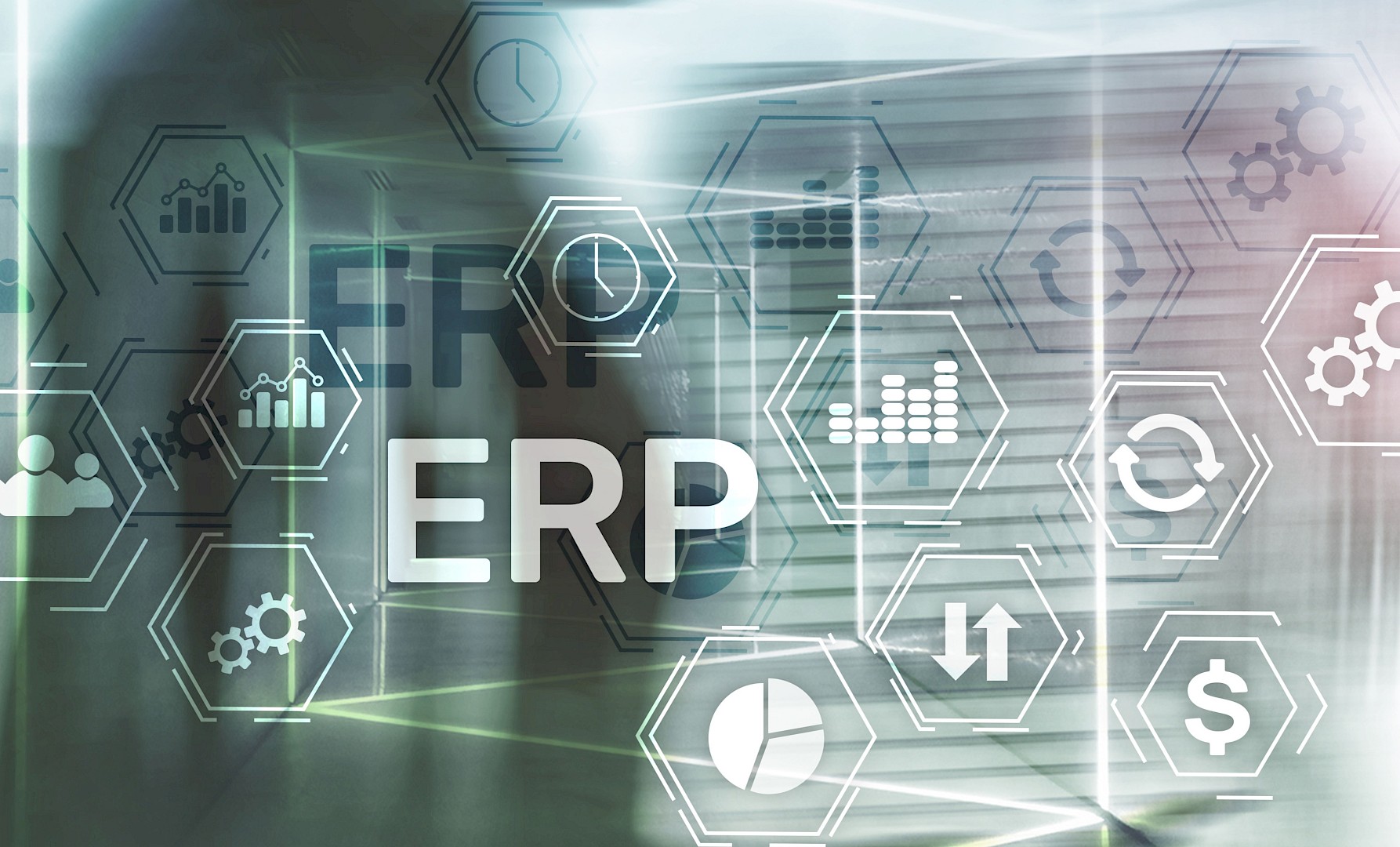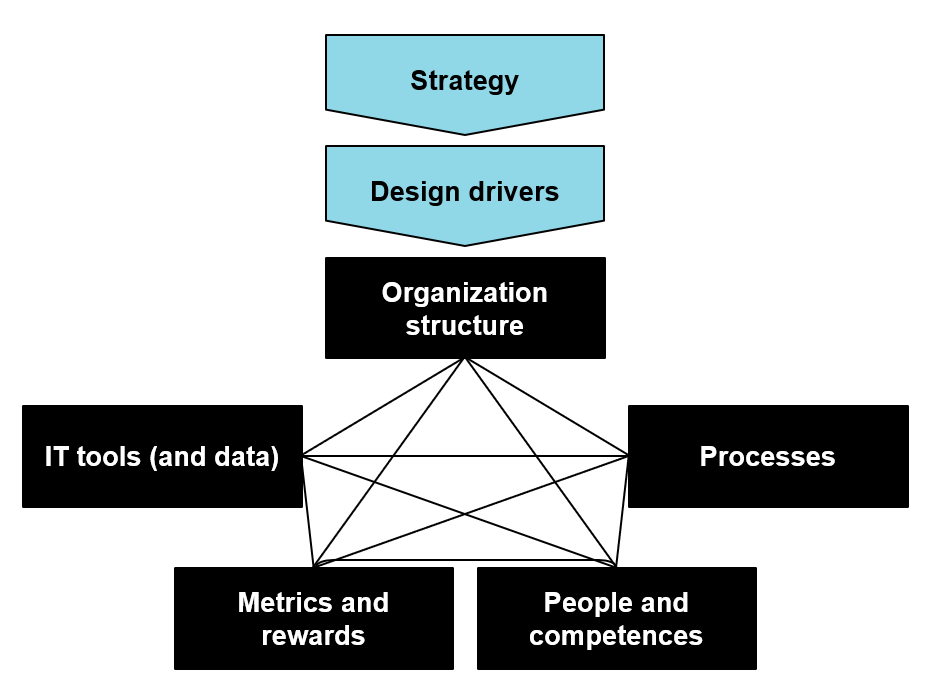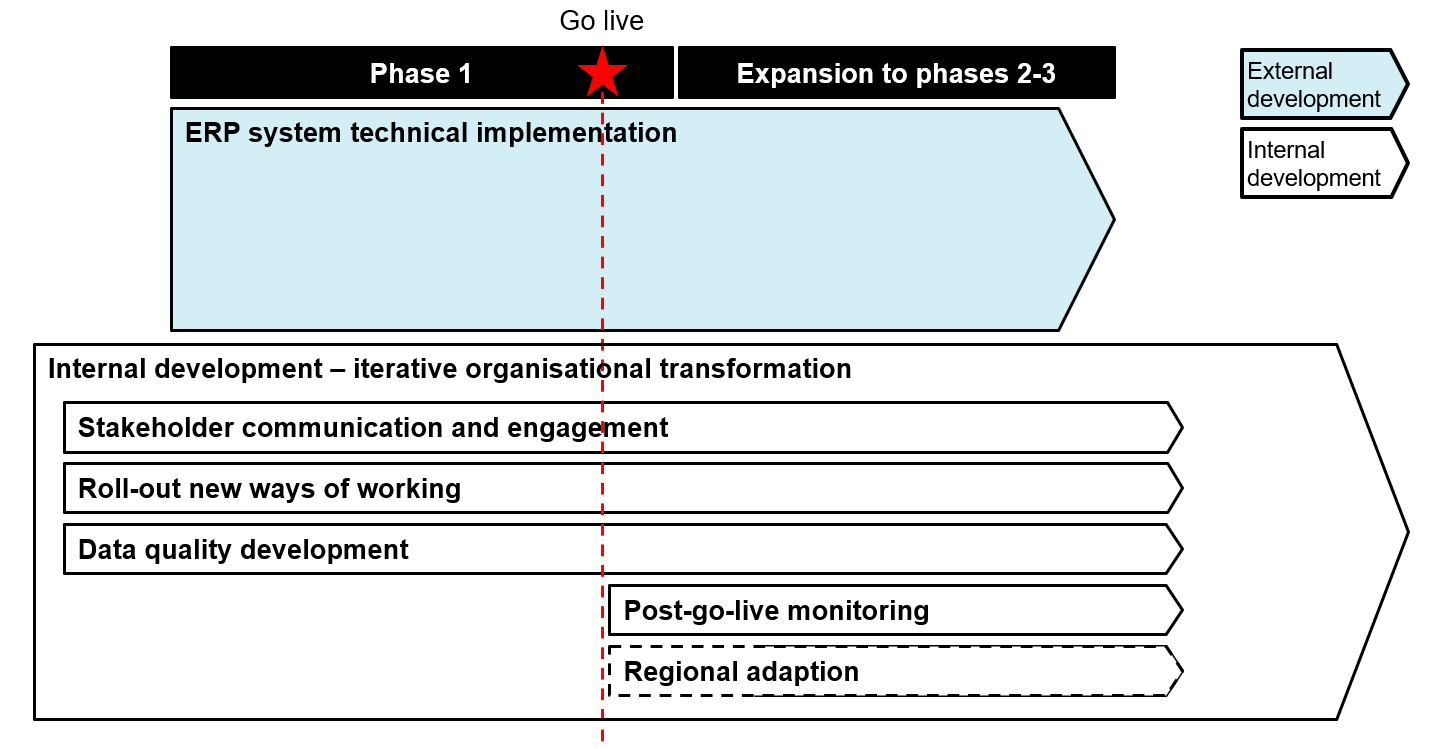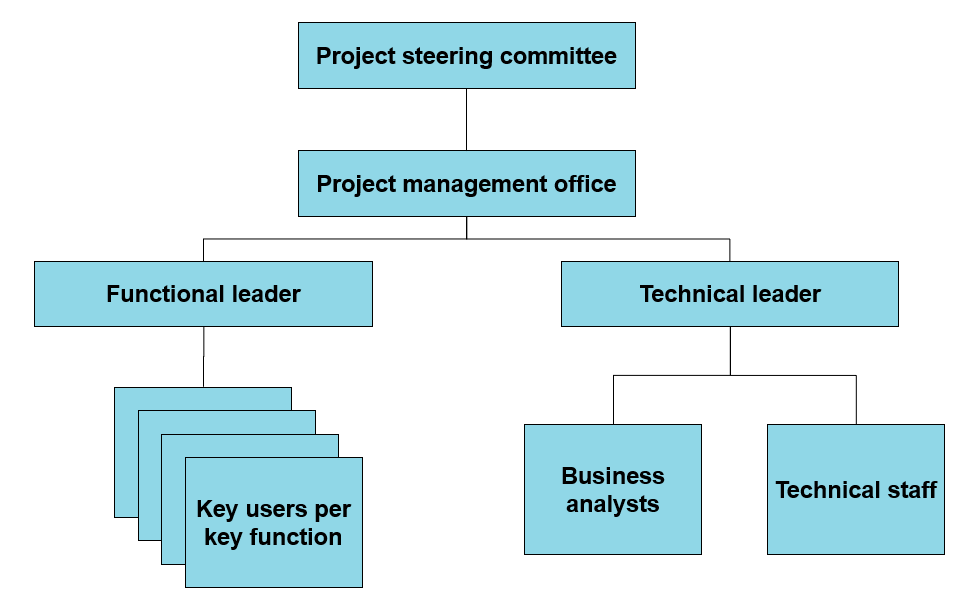Driving a successful ERP program with a balanced focus on internal development and system implementation
29 August 2025 — ERP implementation programs often struggle to meet their promised business value. To succeed, an ERP initiative must be approached as a holistic business transformation, ensuring the organization is ready to fully utilize the new system.

Problem
ERP programs often miss their targeted impact and cause disruption within the organization. Despite heavy investment, these initiatives frequently fail. Instead of enabling growth and simplification, many ERP programs result in user frustration, delays, and a lack of confidence in the system.
Why it happens?
The core issue is that ERP programs are commonly treated as pure IT implementations rather than full-scale business transformations. Companies tend to focus narrowly on technical deployment while neglecting the broader organizational implications.
Solution
Consider development needs on all operating model elements early on during the ERP program and change management. Internal development efforts should be driven in parallel with system implementation to enable efficient utilization of the system after go-live.
Download this post (PDF)
Enterprise Resource Planning (ERP) initiatives often struggle to deliver their expected business value. In many cases, the root cause is not the software itself but a lack of comprehensive change management. An ERP implementation is a major business transformation – and without aligning all aspects of the organization’s operating model to the change, even the best system can underperform.
ERP change management and operating model alignment
Effective ERP change management means addressing all elements of the operating model, not just the IT components. The operating model (Figure 1) encompasses the key dimensions that connect the company’s strategy to its day-to-day operations. These include organizational structure, business processes, people and competencies, performance metrics and incentives, and the IT systems and data. Adjustment needs for each of these elements must be considered and addressed during an ERP deployment:

- Organizational structure: Ensure the organization chart and governance align with the new system. For example, balance global standardization with regional needs – what works in one region may not suit another, and therefore change approaches should respect local differences in culture and process maturity
- Processes: An ERP program is never “just an IT project.” Business processes need to be evaluated and redesigned as needed in parallel with the system selection and implementation. The new ERP alone will not enforce better ways of working unless the underlying process changes are defined and adopted
- People and competences: User buy-in and capability are critical. Proactive communication, stakeholder engagement, and extensive training should accompany the technical rollout. Training and support should begin well before go-live and continue afterward to ensure users are prepared and confident. Employees need to understand the rationale for the ERP, their new roles, and develop the skills to operate in the new environment
- Rewards and metrics: Align incentives and performance measures to encourage adoption of the ERP-enabled processes. For instance, closely monitor system usage after go-live. If usage is below expectations, take early corrective actions – people follow what is measured and rewarded
- IT tools and data: Technology and data element go beyond installing the ERP software. Data quality must be addressed up front; an ERP will not automatically fix inconsistent or inaccurate data. Prioritize data cleansing and migration activities (with defined success metrics) so that the new system has reliable information from day one
Neglecting any of these dimensions can undermine the whole program. Changes to one element of the operating model often demand adjustments to the others – introducing a new system might require new skills and incentives, or updated processes might necessitate a different organizational structure. It is essential to maintain a holistic view (as depicted in the operating model framework, Figure 1) to keep the company’s strategy, its operating model, and ERP implementation fully aligned. With all elements moving in concert, the organization is far more likely to realize the full benefits of ERP initiatives.
Aligning internal development with system implementation
Implementing a new ERP system is not purely a technology project – it is also an organization-wide change that requires significant internal preparation. Too often, companies focus on the technical deployment and only tackle organizational changes after the system is live, resulting in poor adoption and delayed benefits. To avoid this, the business must drive key internal development workstreams in parallel with the ERP implementation timeline. In fact, several of these workstreams should begin early in the project (Figure 2 illustrates an example timeline for these activities alongside system build phases).

Five critical internal workstreams need to progress alongside the technical implementation:
- Stakeholder communication and engagement: Proactive change communication is essential to build buy-in and readiness. During the project, the team should continuously explain the “why” behind ERP initiative and keep users involved. This helps overcome natural resistance to change and prevents surprises. It is also important to set realistic expectations. For example, users should know that initial system releases might not be perfect and typically the users’ workload will be higher during go-live; however, this is a necessary step for obtaining user feedback for refining the solution. Consistent engagement from early planning through post-go-live reinforces a culture open to change.
- Roll-out of new ways of working: An ERP will only deliver value if it goes hand-in-hand with updated business processes. An initial assessment of process development should be conducted already during ERP selection to ensure compatibility between the system and processes, and the adoption of future processes should begin already well before the system is fully in place, potentially through introducing interim tools or simulations so staff can practice new workflows. Additionally, the project must allow ample time for end-to-end testing of processes on the new platform. Resolving process issues and gaps during the implementation (rather than after go-live) ensures the new ERP-enabled workflows run smoothly from day one.
- Data quality development: Clean, consistent data is the foundation for a successful ERP. If data across regions or functions is inconsistent or unreliable, the new system will inherit those problems and fail to deliver expected insights. The organization should invest early in data cleansing, standardization, and defining data governance practices. Establish metrics and checkpoints to track data quality improvement throughout the project. It is also crucial to set realistic expectations: ERP will not magically fix data issues without upfront effort. By go-live, data should meet quality standards so that ERP can perform as intended.
- Post-go-live support and monitoring: Reaching go-live is a major milestone, but the work continues. A plan for robust post-launch support must be in place to sustain success. This includes monitoring how the system is being used, measuring user adoption and performance, and providing an easy channel for users to report issues or request help. Common pitfalls like low system utilization or unresolved errors can be mitigated by having a dedicated support team and clear feedback loops immediately after launch. Early post-go-live monitoring allows the organization to address problems and fine-tune the system and processes before they impact business performance.
- Regional adaptation: For global or multi-site ERP programs, one size may not fit all. While the aim is often to harmonize and standardize processes, legitimate regional differences must be respected. The program should map out variations in business processes and requirements across all regions early on. This analysis helps determine where the ERP template can be consistent versus where localized adjustments are needed. Avoid excessive customization that adds complexity – instead, adapt only where necessary to meet critical local needs. Equally, do not ignore cultural and maturity differences: change management plans should be tailored for each region to ensure all sites embrace the new system. By incorporating regional insights into testing, training, and deployment strategies, the company can achieve a more uniform and successful ERP adoption worldwide.
By advancing these five internal workstreams in tandem with the technical implementation, an organization ensures that it is organizationally ready when the new ERP goes live. This balanced approach significantly increases the likelihood of a smooth transition and allows the business to start realizing value from the ERP immediately after deployment (as suggested by the alignment shown in Figure 2). In short, internal readiness and technical go-live must coincide for an ERP program to deliver its full promise.
Governance and post-go-live success in ERP programs
Even with strong planning of technical and internal workstreams, an ERP program needs the right governance and follow-through to succeed. A well-structured program governance model ensures a balanced focus on both the technical implementation and the internal transformation. Equally important, organizations must have a plan to sustain success after the ERP system goes live. In practice, this means establishing structures (such as a dedicated Program Management Office) to coordinate the effort and extending support beyond the go-live date to realize the ERP’s long-term benefits.
Large ERP programs typically designate both a functional (business) lead and a technical lead, reporting to an executive steering committee. In theory, these two leaders share accountability for the program’s success. However, companies often struggle to maintain equal attention on the internal business changes versus the technical build. The functional (internal change) lead might be a part-time role or get pulled into daily operations, while the technical lead (often from an external integrator) is full-time on the project. To correct this imbalance, many organizations establish a Program Management Office (PMO) to provide overarching coordination (Figure 3 illustrates a typical ERP program team setup). PMO serves as the glue between the technical and functional streams – working jointly with both sides to define workstreams and timelines, estimate required effort, track progress, and resolve issues. This governance structure keeps the implementation on track and ensures that internal development tasks (for instance, trainings, process updates, data preparation) receive as much focus as system configuration and testing. In effect, the PMO and dual-leadership model enforce a balanced approach so that no aspect of the program is neglected.

Reaching go-live is not the end of an ERP transformation; it is a transition from project mode to continuous operation and improvement. To sustain success, the program’s governance and support structure should extend into the post-implementation phase. Key leaders and team members must remain engaged to oversee adoption and address any emerging problems. Immediately after go-live, the organization should closely monitor system usage and performance against expectations.
Robust support processes need to be in place to handle user feedback and fix issues quickly – for example, a helpdesk or “hypercare” team dedicated to the ERP during the stabilization period. Additionally, success metrics (such as data accuracy, process cycle times, or other KPIs the ERP was meant to improve) should be tracked and reported to the governance team. This allows leadership to verify that the anticipated benefits are materializing and to take corrective action if not. Many organizations also establish an ongoing ERP center of excellence or assign a dedicated team to own the system and drive continuous improvements after the initial project ends. The overarching idea is that an ERP initiative is an iterative journey, not a one-off event – continuous governance and improvement cycles are necessary to fully realize and sustain the business value.
Conclusion
An ERP program is not a single event but an iterative journey of organizational transformation. Success comes from aligning strategy, the operating model, and system implementation into one coherent path. By advancing internal readiness in tandem with technical deployment, companies maximize the return on their ERP investment and position themselves for long-term operational excellence.
Tags
ERP, ERP implementation, Digital transformation, Organizational transformation










